How to Help Your 5th Grade Student Prepare for the California CAASPP Math Test

Welcome, California parents of 5th grade students! As you prepare to support your child in conquering the CAASPP (California Assessment of Student Performance and Progress) Math Test, you’re embarking on a crucial journey to ensure their success. The CAASPP test is a vital assessment that measures your child’s understanding of key math concepts and skills, and your guidance plays a significant role in their preparation. For official information California Department of Education website.
The CAASPP test is designed to evaluate students’ proficiency in various math domains and is a fundamental part of the California education system. Understanding the test’s purpose and importance is essential for parents to provide the necessary support and encouragement to their children. This comprehensive guide aims to equip you with the knowledge, strategies, and resources to help your 5th grader excel on the CAASPP Math Test. For additional educational resources,.
Throughout this guide, you can expect detailed insights into the test format, key math skills your child needs to master, effective study strategies, test-taking techniques, and emotional support tips. By implementing the advice provided here, you can empower your child to approach the CAASPP Math Test with confidence and proficiency.
We understand the significance of this journey and are here to support you every step of the way. Together, let’s embark on this enriching path to help your child succeed on the CAASPP Math Test.
Understanding the California CAASPP 5th Grade Math Test
Before diving into preparation strategies, it’s crucial to have a solid understanding of the CAASPP Math Test. This assessment covers a range of math domains, including operations, geometry, measurement, data analysis, and more. With a specified number of questions, time limits, and various question types, the test format can be challenging for students.
The scoring system of the CAASPP test is crucial to comprehend, as it reflects your child’s proficiency levels in different math skills. Proficiency levels indicate the depth of understanding and mastery your child demonstrates in each domain. Understanding when the test is administered, how results are used, and what they signify is essential for effective preparation.
Key Math Skills Your 5th Grader Needs to Master
Operations & Algebraic Thinking
In this domain, students are expected to demonstrate fluency with operations and understand algebraic concepts at a 5th-grade level. For example, they should be able to solve multistep word problems involving all four operations and interpret numerical patterns.
Number & Operations in Base Ten
Proficiency in understanding place value, performing operations with multi-digit whole numbers, and decimals is crucial. Your child should be able to fluently multiply and divide within 1000 and understand the relationship between fractions and decimals.
Number & Operations – Fractions
The ability to compare, add, subtract, multiply, and divide fractions and mixed numbers is a key skill in this domain. Your child should be comfortable working with fractions and understanding their relationship to whole numbers.
Measurement & Data
Understanding various units of measurement, solving problems involving measurement conversions, and interpreting data from graphs and tables are essential skills for success in this domain. Your child should be able to apply measurement concepts to real-world scenarios.
Geometry
Recognizing and understanding geometric shapes, calculating area and perimeter, and solving problems related to angles and symmetry are important skills to master. Your child should be able to identify, classify, and analyze shapes confidently.
Building Strong Math Foundations at Home
One of the most effective ways to help your child prepare for the CAASPP Math Test is by building strong math foundations at home. Daily practice, incorporating math into everyday activities, playing games, using manipulatives, reading math books, and utilizing technology resources can significantly enhance your child’s math skills.
Daily Practice Strategies
- Set aside dedicated time each day for math practice.
- Use a variety of resources, including worksheets, online platforms, and math games.
- Monitor your child’s progress and adjust the difficulty level as needed.
Making Math Part of Everyday Activities
Engage your child in math while grocery shopping, cooking, or planning a budget. These real-world applications help reinforce math concepts and make learning fun and practical.
Games and Activities that Build Number Sense
Explore math games like card games, board games, and online math challenges to enhance your child’s number sense and problem-solving skills. Games offer a fun and interactive way to reinforce math concepts.
Using Manipulatives and Visual Aids
Manipulatives such as base-10 blocks, fraction tiles, and geometric shapes help make abstract math concepts tangible for your child. Visual aids support visual learners and enhance understanding of mathematical concepts.
Reading Math Books Together
Explore math-themed storybooks, puzzle books, and informational texts with your child. Reading math books together can spark curiosity, deepen understanding, and foster a love for mathematics.
Technology Resources that Help
Integrate educational math apps, websites, and online resources into your child’s learning routine. These digital tools offer interactive and engaging ways to practice math skills and concepts.
Effective Study and Practice Strategies
Creating a conducive environment for study and practice is crucial for your child’s success on the CAASPP Math Test. Establishing a realistic study schedule, making practice sessions engaging, using practice tests effectively, reviewing mistakes constructively, building stamina, and tracking progress are key strategies to implement.
Creating a Realistic Study Schedule
Develop a study timetable that balances practice, review, and breaks. Ensure the schedule aligns with your child’s routine and allows for consistent and focused study sessions.
Making Practice Sessions Enjoyable and Engaging
Incorporate interactive and fun activities into practice sessions to keep your child motivated and enthusiastic about learning math. Utilize games, rewards, and varied practice methods to maintain engagement.
Using Practice Tests Effectively
Introduce practice tests to familiarize your child with the test format and types of questions. Encourage your child to simulate test conditions, time limits, and focus on areas that need improvement.
Reviewing Mistakes Constructively
Guide your child in analyzing mistakes, understanding the underlying concepts, and applying corrective strategies. Mistakes are opportunities for learning and growth, so approach them with a positive mindset.
Building Stamina for Longer Practice Sessions
Gradually increase the duration of study sessions to help your child build endurance for longer tests. Break down study sessions into manageable segments and gradually extend the duration as your child’s stamina improves.
Tracking Progress Over Time
Maintain a record of your child’s progress, noting areas of strength and areas that require further practice. Tracking progress helps you tailor study sessions to address specific needs and celebrate achievements along the way.
Test-Taking Strategies and Techniques
Equipping your child with effective test-taking strategies can significantly impact their performance on the CAASPP Math Test. From time management techniques to problem-solving approaches, these strategies can help your child navigate the test with confidence and precision.
Time Management Strategies
Teach your child how to allocate time effectively for each question, pacing themselves throughout the test. Encourage strategic time management to ensure all questions are addressed within the given timeframe.
How to Read Word Problems Carefully
Guide your child in dissecting word problems, identifying key information, and formulating a plan to solve them step by step. Emphasize the importance of understanding the problem before attempting a solution.
Problem-Solving Strategies
Encourage your child to approach problems using different strategies, such as drawing diagrams, making tables, or working backward. Providing multiple problem-solving approaches helps your child tackle diverse question types effectively.
When and How to Skip Difficult Questions
Teach your child when it’s appropriate to skip a challenging question and how to mark it for later review. Advise them to manage their time wisely by prioritizing questions they can answer confidently.
Checking Work Effectively
Instill the habit of reviewing answers before submitting the test. Encourage your child to double-check calculations, verify solutions, and ensure accuracy in their responses. Checking work minimizes errors and boosts confidence.
Handling Different Question Types
Prepare your child to tackle various question formats, such as multiple-choice, short answer, and problem-solving questions. Familiarize them with different question structures and strategies to approach each type effectively.
Supporting Your Child Emotionally
Emotional support is a crucial aspect of preparing your child for the CAASPP Math Test. Recognizing and addressing test anxiety, building confidence, creating a positive learning environment, handling setbacks constructively, celebrating progress, and offering encouragement are essential for your child’s overall well-being and success.
Recognizing and Managing Test Anxiety
Help your child identify signs of test anxiety and provide coping mechanisms to reduce stress levels. Encourage relaxation techniques, positive self-talk, and mindfulness practices to manage anxiety effectively.
Building Confidence Through Small Wins
Celebrate small achievements and progress to boost your child’s confidence and motivation. Recognize their efforts, improvements, and dedication to instill a positive mindset and self-assurance.
Creating a Positive Learning Environment at Home
Foster a supportive and encouraging atmosphere at home that promotes learning and growth. Establish a space conducive to study, provide resources for exploration, and engage in constructive dialogue to nurture your child’s academic development.
Dealing with Setbacks Constructively
Guide your child in understanding that setbacks are part of the learning process and offer opportunities for growth. Encourage resilience, perseverance, and a positive attitude towards challenges to help them overcome obstacles effectively.
Celebrating Progress, Not Just Perfection
Emphasize the importance of progress, effort, and improvement over perfection. Celebrate milestones, breakthroughs, and learning moments to reinforce a growth mindset and foster a healthy approach to learning.
Encouragement Strategies that Work
Provide consistent encouragement, praise, and support to motivate your child throughout their preparation journey. Offer constructive feedback, positive reinforcement, and a nurturing environment to inspire confidence and resilience.
Practice Resources and Tools
Accessing high-quality practice resources and tools is vital for comprehensive preparation for the CAASPP Math Test. Reviewing helpful practice materials, utilizing online resources and apps, creating personalized practice problems, and collaborating with teachers and school resources can enhance your child’s readiness for the test.
Review of Helpful Practice Materials
Explore a variety of practice materials, including worksheets, practice tests, and interactive learning platforms that align with the CAASPP Math Test curriculum. Utilize resources that cater to your child’s learning style and needs.
Online Resources and Apps
Discover educational websites, math apps, and online platforms that offer engaging math practice and interactive learning experiences. Incorporate technology resources that complement classroom instruction and encourage independent study.
How to Choose Quality Practice Materials
Consider factors such as alignment with test standards, level of difficulty, and relevance to your child’s learning objectives when selecting practice materials. Choose resources that challenge and support your child’s math skills effectively.
Creating Your Own Practice Problems
Engage your child in creating personalized math problems based on their areas of strength and improvement. Encourage them to design challenging questions that require critical thinking and application of math concepts.
Working with Teachers and School Resources
Collaborate with your child’s teachers to access additional practice materials, receive feedback on performance, and align home practice with classroom instruction. Leverage school resources, tutoring services, and math clubs to enhance your child’s math proficiency.
Creating a Test Day Success Plan
The Absolute Best Book to Ace 10 Full-Length STAAR Grade 5 Math Practice Tests: The Practice You Need to Ace the STAAR Grade 5 Math Test
As the test day approaches, it’s essential to have a well-defined plan in place to ensure your child’s success. From preparing in the week leading up to the test to establishing healthy habits, routines, and post-test discussions, a comprehensive test day success plan sets the stage for a positive testing experience.
What to Do the Week Before the Test
- Review key math concepts and strategies.
- Ensure your child gets ample rest and nutrition.
- Encourage relaxation techniques to manage stress.
What to Do the Day Before
- Organize necessary materials, such as pencils, erasers, and calculators.
- Engage in light review sessions to refresh math skills.
- Establish a calming evening routine to promote relaxation.
Test Day Preparation
- Wake up early to allow for a stress-free morning.
- Have a nutritious breakfast to fuel your child’s brain.
- Review a few key concepts for last-minute confidence.
Healthy Habits
- Ensure your child gets adequate sleep the night before the test.
- Encourage healthy eating habits to support cognitive function.
- Incorporate physical activity to reduce stress and boost mood.
Morning of the Test Routine
- Arrive at the testing location early to avoid rushing.
- Offer words of encouragement and positivity to boost confidence.
- Remind your child to stay calm, focused, and confident throughout the test.
After the Test – What to Discuss
- Celebrate your child’s effort and perseverance regardless of the outcome.
- Discuss any challenging questions or sections to understand areas for improvement.
- Encourage open communication about the test experience and address any concerns or questions your child may have.
Frequently Asked Questions
How do you add and subtract mixed fractions?
Adding and subtracting mixed fractions involves converting them to improper fractions, finding a common denominator, performing the operation on the numerators, and simplifying the result. To add, add the numerators after finding a common denominator, and to subtract, subtract the numerators. Encourage your child to practice with our fractions practice worksheets to strengthen their skills.
How do you multiply and divide decimals?
To multiply decimals, multiply the numbers as if they were whole numbers. Count the total number of decimal places in the numbers being multiplied and place the decimal point in the answer so that it has the same total number of decimal places. When dividing decimals, move the decimal point in the divisor to make it a whole number and move the decimal point in the dividend by the same number of places. For more practice and examples, you can visit the EffortlessMath.com pages on multiplying decimals and dividing decimals.
What is the relationship between chord and arc?
In a circle, a chord is a line segment that connects two points on the circle’s circumference. An arc, on the other hand, is a part of the circle’s circumference between two points. The relationship between a chord and an arc is that a chord divides the circle into two arcs, with the chord itself being the boundary between the two arcs. Understanding this relationship can help your child visualize and solve geometry problems involving circles on the CAASPP Math Test.
Final Thoughts
As you embark on this journey to help your 5th grade child prepare for the California CAASPP Math Test, remember that your support and guidance are invaluable. By following the strategies outlined in this guide, you can empower your child to approach the test with confidence, proficiency, and a positive mindset.
Continue to celebrate your child’s progress, encourage their curiosity, and foster a love for learning mathematics. Remember that success on the CAASPP Math Test is not just about a score but about the growth, resilience, and determination your child exhibits throughout their math journey.
Stay engaged, stay positive, and stay supportive. Together, you and your child can navigate the challenges of the CAASPP Math Test with determination and success. Best of luck on this rewarding journey!
The Most Comprehensive California CAASPP Grade 5 Math Preparation Bundle
Related to This Article
More math articles
- 6th Grade ACT Aspire Math Practice Test Questions
- Study Skills Guide For Studying Math
- ASVAB Math Formulas
- Top 10 8th Grade PARCC Math Practice Questions
- How to Graph an Equation in the Standard Form?
- 5th Grade ACT Aspire Math Practice Test Questions
- Full-Length 8th Grade FSA Math Practice Test
- How to Add and Subtract Radical Expressions? (+FREE Worksheet!)
- The Ultimate 7th Grade North Carolina EOG Math Course (+FREE Worksheets)
- The Ultimate 7th Grade K-PREP Math Course (+FREE Worksheets)
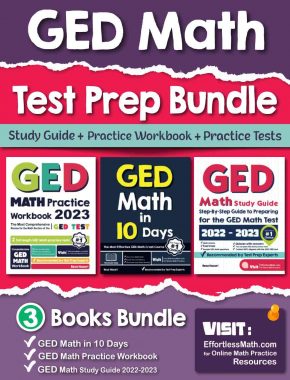
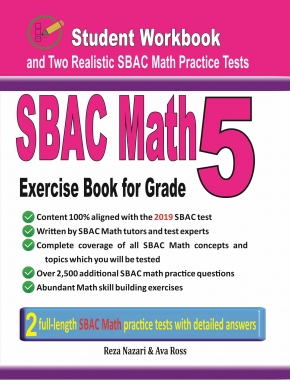



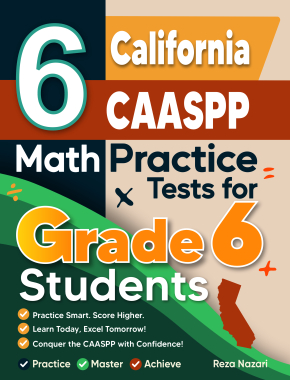
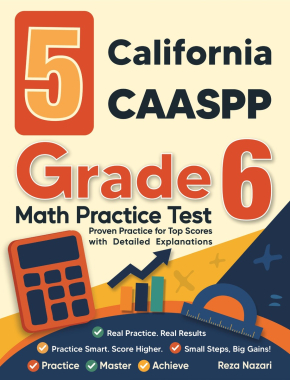
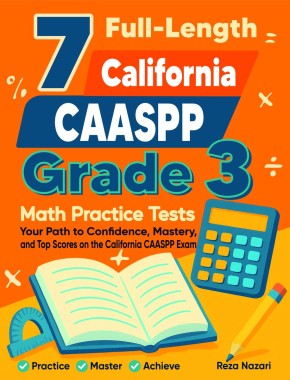
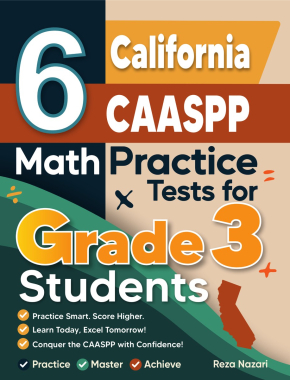

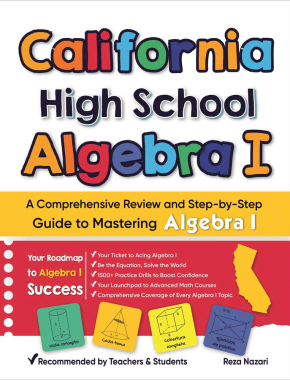

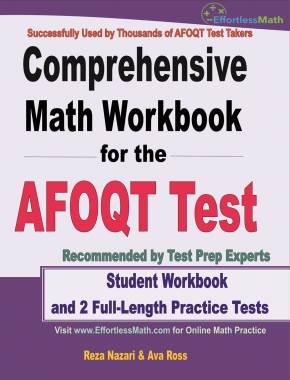
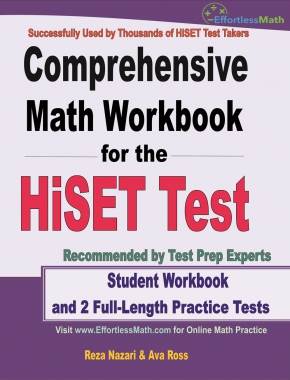
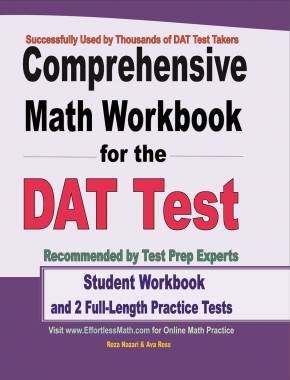
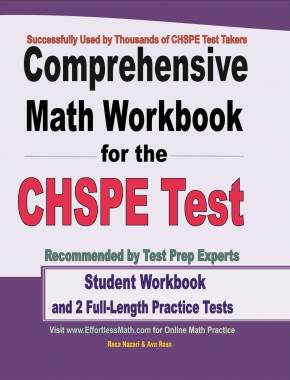

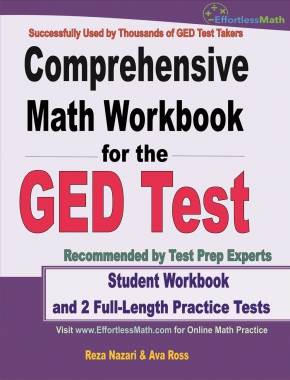











What people say about "How to Help Your 5th Grade Student Prepare for the California CAASPP Math Test - Effortless Math: We Help Students Learn to LOVE Mathematics"?
No one replied yet.